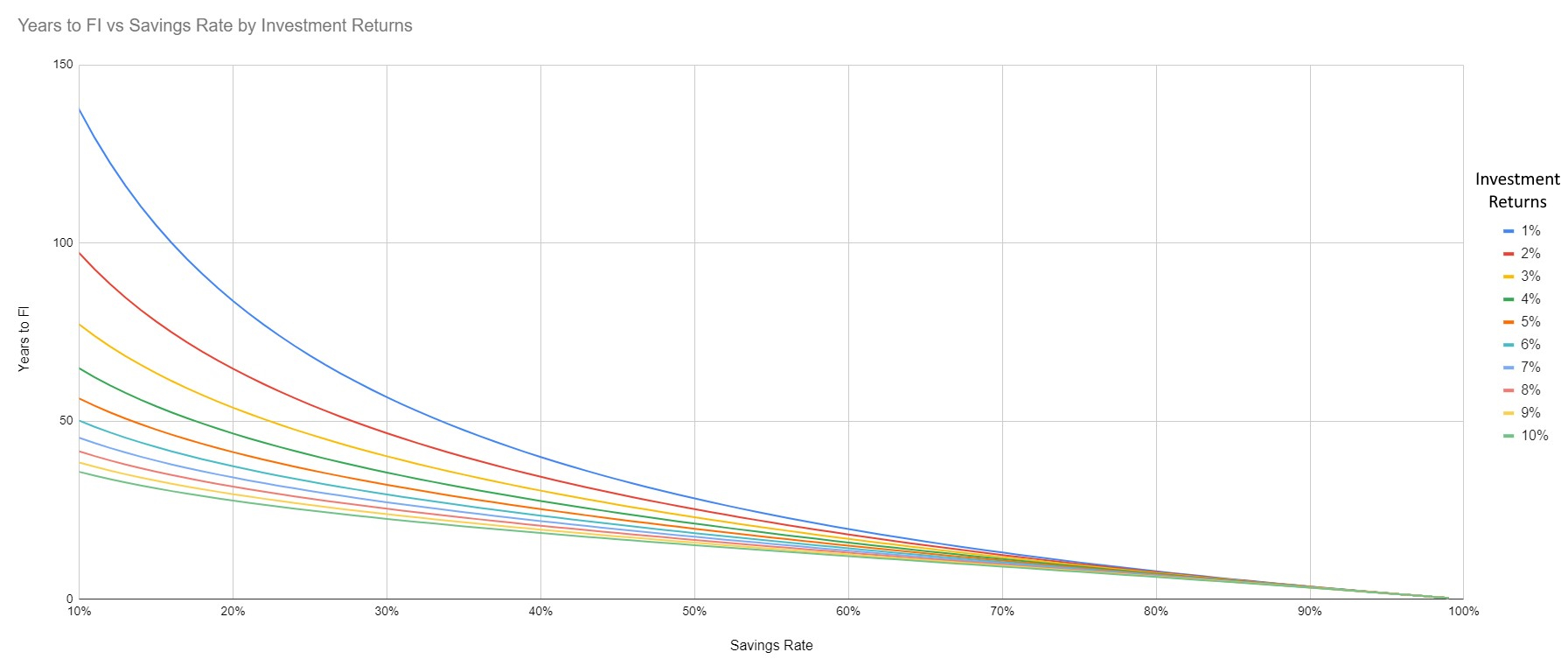In the Financial Independence community, there’s a lot of talk about one’s savings rate (SR). People argue about how to calculate it, how to compare it, and the best ways to improve it. But, I don’t think there’s enough attention given to one of the best consequences of having a high SR: market independence. In other words, a high savings rate reduces market risk.
I’ll say that again: as your savings rate goes up, your ability to reach your financial goals in your desired timeframe depends less and less on the market’s performance.
Savings Rate Illustrated
I made a graph (inspired by a post at Millennial Revolution) to illustrate the point:

SR is on the horizontal axis and the number of years to reach financial independence (25x annual spending) is on the vertical axis. The different lines show different investment return scenarios, ranging from 4% to 9% real annual returns. The graph also assumes that you are starting from zero savings.
For a low SR, the different lines diverge, indicating that market performance has a big impact on the amount of time to reach FI. For example, for a 10% savings rate, it would take about 35 years to reach FI if investments return 9% per year, but as much as 59 years if returns average 4%!
Takeaway
If you are an American reading this, your life expectancy is likely around 80 to 90 years. If you are only saving 10% of your income (and statistically speaking, you are probably saving even less) whether you will retire or not will depend mostly on your investment performance. Given the inherent unpredictability of the markets, are you willing to leave that up to chance?
By increasing your SR to 30, 40, or 50% or more, not only are you shortening your time until FI (yay!), but you are also reducing the variance of that time to FI. The investment return lines converging indicate that market performance makes less of a difference to reaching FI. This is so powerful because it increases your confidence that you will reach FI on time.
A high savings rate sets you not only on the path to financial independence, but also market independence as well.